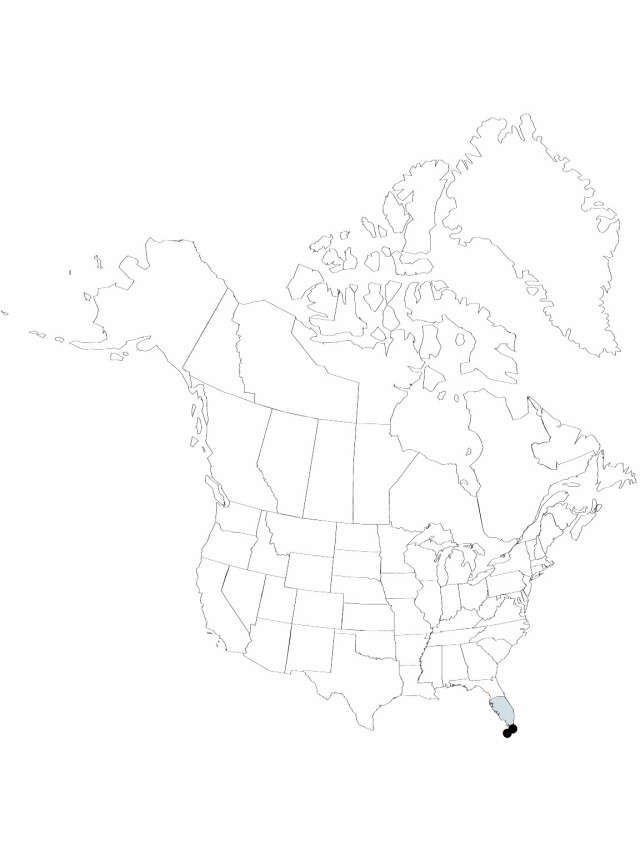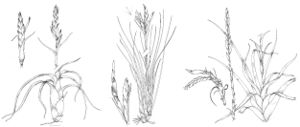Tillandsia balbisiana
in J. J. Roemer and J. A. Schultes, Syst. Veg. 7(2):1212. 1830.
Plants single or clustering, flowering to 75 cm. Stems short. Leaves 15–30, many-ranked, reflexed, twisted or contorted, gray, often flushed red, to 65 × 0.6–1.4 cm, appressed-grayish-scaly; sheath conspicuously rust-colored toward base, ovate to elliptic, conspicuously inflated, forming small pseudobulb, 2–4 cm wide; blade linear-triangular, leathery, channeled to involute, apex attenuate. Inflorescences: scape conspicuous, erect, 8–30 cm, 2–4 mm diam.; bracts densely imbricate, spreading, recurved and twisted like leaves; sheath of bracts narrowing gradually into blade; spikes erect, 2-pinnate, linear, compressed, 2–10 × 1 cm, apex acute; lateral branches 2–10 (rarely simple). Floral bracts imbricate, erect, green to red, broad (covering all or most of rachis, rachis not visible at anthesis), elliptic, keeled, 1.5–2 cm, leathery, base not visible at anthesis, apex acute, surfaces glabrous to inconspicuously scaly near apex only, venation even to slight. Flowers 5–30, conspicuous; sepals with adaxial pair connate, lanceolate, keeled, 1.5–2 cm, leathery, apex acute, surfaces glabrous; corolla tubular; petals erect, violet, ligulate, to 3.5 cm; stamens exserted; stigma exserted, conduplicate-spiral. Fruits to 4 cm.
Phenology: Flowering spring–summer.
Habitat: Epiphytic on a variety of hosts in open woods, cypress swamps, coastal forest
Elevation: 0–30 m
Distribution

Fla., Mexico, West Indies, Central America, South America.
Discussion
Selected References
None.
